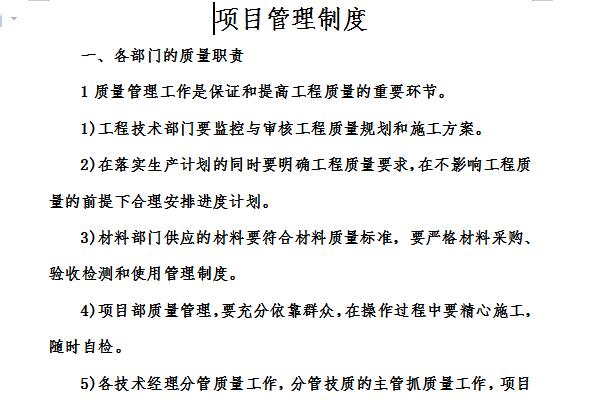
Main contents of project management system
Managing people includes position setting and personnel behavioral standard management.
Directors need to clarify the interrelationships of various management affairs, handling principles and procedures, what should and cannot be done; how should and cannot be done; and to what extent.
What kind of rewards and punishments will be obtained as a result of behavior and dealing with things, etc.
Generally speaking, job responsibilities and management processes are both part of the system, but job responsibilities and management processes are more focused on their key areas.
The project management system is one of the main supports for successful project management.
Specifically, commonly used project management systems include project scope management system, project progress management system, project cost management system, project quality management system, project human resources management system, project communication management system, project risk management system, and project procurement management system. , project suspension system, etc.
Main principles of project management system
(1) Normativeness.
The biggest feature of the management system is its normative nature, which is presented in a process of unity of stability and dynamic change. For project management, long-lasting norms are not necessarily adaptable norms, and frequently changing norms are not necessarily good norms. They should be relatively stable and dynamically changed according to the needs of project development. In the development process of the project, the management system should have corresponding stable cycles and dynamic periods corresponding to the project life cycle. This stable cycle and dynamic period are affected by the project's industry nature, industry characteristics, team personnel quality, and project environment. , the project manager’s personal factors and other related factors are comprehensively affected.
The normative nature of the project management system is reflected in two aspects: first, the normative and scientific nature of objective things and natural laws themselves; second, the normative nature determined by specific management activities.
(2) Hierarchy.
Management is hierarchical, and the project management system must also be hierarchical. The usual management system can be divided into three levels: responsibility and rights system, job function system and work basis system. Each level of management system contains different management elements. The first two systems contain more elements of management philosophy and management art, while the latter one belongs to the operation and execution level, emphasizes execution, and has more scientific and hard technical elements.
(3) Adaptability.
The purpose of implementing the management system is to achieve the project goals more, faster, better and more cost-effectively, and to satisfy the project team and various project stakeholders as much as possible. We do not make systems for the sake of systems. The formulation of the system must be combined with the reality of project management. It must not only learn from internationally advanced theories, but also be combined with our country's national conditions and adapt to our country's advanced culture (note that it is not a backward bad habit).
The project management system should be concise and clear, easy to understand and implement, and easy to inspect and assess.
The editor recommends:
The project management system is a free template. You can download the source file for you to edit, modify and replace. Huajun Software Park also providesKindergarten financial management system,File management systemdownload.






































it works
it works
it works